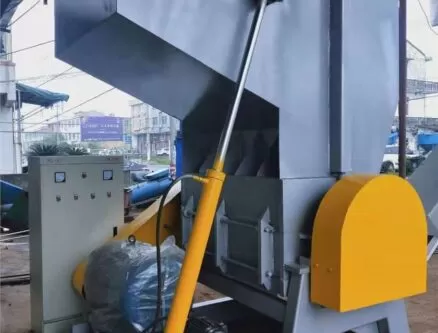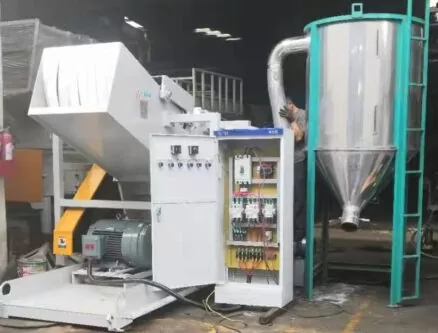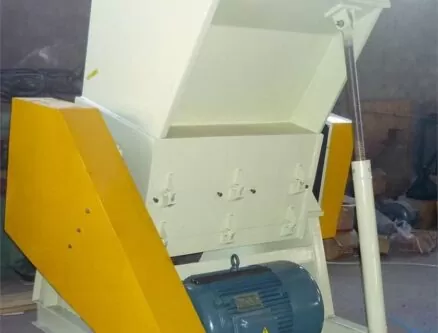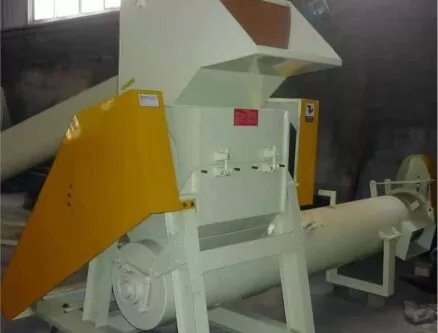Plastic packaging is everywhere—fast food containers, shopping bags, bubble wrap. It’s convenient, cheap, and unfortunately, a pain in the environment. We try to recycle it, but the truth is, most of it ends up as waste because it’s too light, too mixed, or too dirty. That’s where plastic crushing technology comes in. As the CEO of Amige, I’ve spent years fine-tuning the art of shredding packaging waste into something valuable. Let me show you where we stand—and how we can do better.
Crushing technology in plastic packaging recycling helps reduce volume, standardize size, and prepare waste for further processing. While current methods work for common materials, improvements are needed in automation, contamination tolerance, and energy efficiency to match the diversity of packaging waste.
This topic is more than technical—it’s personal. I’ve watched small factories struggle with film waste and big brands dump tons of unshreddable wrappers. We can fix this, one crushed bottle at a time.

What types of plastic packaging are being crushed today?
The good news? A lot.
We’re already shredding HDPE detergent bottles, PET water bottles, LDPE bags, PP wrappers, and even laminated snack packs—though those last ones fight back.
At Amige, we classify plastic packaging into three categories:
- Rigid packaging – bottles, trays, caps.
- Flexible packaging – films, bags, pouches.
- Multilayer or composite packaging – think potato chip bags (metal + plastic).
Rigid packaging is easiest to shred. Studies show rigid plastic has a higher recovery rate compared to flexible types. But flexible and multilayer types? They’re like trying to slice jelly with a chainsaw.
Some machines get clogged with films. Others struggle with sticky labels or ink-coated wrappers. That’s why understanding your input waste is step one. Every plastic behaves differently under the blade.
What machines are currently used to crush plastic packaging?
Let’s talk tech—my favorite part.
Right now, the most common crushers for plastic packaging include:
- Single-shaft shredders – powerful, reliable, but sometimes overkill.
- Double-shaft shredders – great for big loads, less precise.
- Granulators – for finer flakes, post-shredding.
- Film crushers – designed specifically to handle LDPE and soft packaging.
We’ve developed custom blades just for cling film—that annoying stuff that tangles like spaghetti. And yes, I’ve personally pulled more than one film strip out of a jammed shaft.
Data from our machines show film-specialized crushers increase efficiency by up to 35%.
But a machine is only as good as its maintenance. That’s why I tell all our clients: “Treat your shredder like a coffee machine—clean it often, or it’ll start spitting weird stuff.”

What are the current challenges in crushing plastic packaging?
Ah, the pain points. Let me count the ways.
- Contamination – Food residue, glue, and labels make processing a nightmare.
- Low density – Films and wrappers are light, floaty, and jam easily.
- Volume vs throughput – Crushing 1 ton of PET bottles is fast. 1 ton of bubble wrap? Takes forever.
- Blade wear – Dirty packaging wears blades faster than clean, rigid plastic.
- Sorting issues – Mixed packaging types often go through the same line.
Over 60% of collected flexible packaging in Asia remains unrecycled, simply because it’s too hard to crush and separate.
I once visited a facility where their machine refused to shred chip bags. It literally jammed, beeped, and refused to turn on until the bag was removed. I told the operator, “Even your shredder hates junk food.”
How can we improve crushing efficiency in plastic packaging recycling?
Now this is where I roll up my sleeves.
Here are the improvements I recommend, and we’ve already tested some at Amige:
- Pre-sorting systems – Separate soft film from rigid before crushing.
- Inline washing units – Wash the plastic before or during crushing to reduce contamination.
- Blade material upgrades – Switch to wear-resistant alloys for longer machine life.
- Variable speed control – Adjust rotor speed based on plastic type.
- Film compactor-crusher hybrids – Compress and crush in one go.
Experimental data shows pre-washed packaging leads to 40% more uniform flakes.
Automation is key. Manual sorting and feeding slows down everything. We’re currently developing a smart shredder that adjusts blade gap based on material type—yes, it’s as cool as it sounds.

Are there any innovations in blade design?
Blades are the unsung heroes of the plastic crushing world.
Most companies use flat blades or hook blades. We’ve started experimenting with:
- V-shaped rotary blades – slice rather than chop.
- Tungsten-carbide tipped edges – insane durability.
- Self-sharpening systems – for consistent performance.
We once tried a serrated blade set on multilayer packaging. The result? Flakes that looked like cheese curls, but processed perfectly.
New blade designs can increase crushing precision by 28%.
It’s all about matching the blade to the beast. A flimsy wrapper needs finesse, not brute force. But give me a polypropylene crate, and I’ll show you what power looks like.
What role does cleaning play in crushing performance?
Cleaning might seem boring, but it’s where the magic happens.
Clean plastic runs smoother, protects blades, and produces better flakes. Dirty plastic clogs, corrodes, and costs money.
That’s why we always recommend:
- Cold washing units before crushing.
- Label removers or de-laminators.
- Spin dryers post-crushing.
Contaminant levels of more than 5% reduce end-product quality drastically.
One of our clients tried skipping washing. Within two weeks, they called us: “The blades are black and sticky.” I said, “Congrats, you just deep-fried your machine.”

What’s the future of crushing tech for packaging?
This is where it gets exciting.
Future machines will:
- Use AI to identify and sort plastics before crushing.
- Be modular – one base unit with swappable crushers.
- Be mobile – installed in containers, ready to travel to waste sites.
- Work with chemical recycling – preparing plastic for depolymerization, not just melting.
We’re also looking at closed-loop feedback systems, where the crusher adapts its pressure and speed based on the resistance it senses. Think of it like a smart car… that eats packaging.
The global market for plastic recycling machines is expected to reach $6.9 billion by 2028. And trust me—we’re going to be part of that future.
Conclusion
Plastic packaging isn’t going away anytime soon. But with smarter, tougher, and cleaner crushing technology, we can turn that packaging into resources—not trash. Let’s keep breaking things… the right way.
